Queen’s Bath in Hampi is a fascinating historical site that offers a glimpse into the luxurious lifestyle of the Vijayanagara Empire. Situated in the heart of Hampi’s Royal Centre, this ancient bathing complex served as a private retreat for the royal women during the 14th to 16th centuries. While the exact purpose remains a topic of debate, Queen’s Bath provides insight into the royal life of the era and stands as a testament to the architectural finesse of the Vijayanagara dynasty.
Queen’s Bath is the first ruined building you’ll see when you enter the Royal Center from the Kamalapura-Hampi main road. It’s easily accessible within the Hampi ruins, located close to the Kamalapur Bus Stand, around 1 kilometer away, and around 3 kilometers from the Hampi Bus Stand. You can reach it by walking, hiring an autorickshaw, or renting a bicycle.

Table of Contents:-
The Queen’s Bath, despite its name, is more than just a bathing structure. It’s a window into the bygone era, a captivating blend of history, architecture, and a touch of mystery. So, on your next trip to Hampi, don’t miss the chance to explore this intriguing monument and let your imagination wander through the royal courts of the Vijayanagara Empire.

Quick Facts
- Timing: 06:00 AM to 06:00 PM
- Entry Fee: No entry fee required
- Photography: Allowed
- Location: Google Maps
Functionality and Purpose
This imposing square structure in Indo-Islamic style is commonly identified as the Queen’s Bath. However, it remains uncertain for what occasions it was used or by whom.[1] While its name suggests a royal bathing chamber, its true purpose remains a topic of debate among historians. Here’s a look at the various theories surrounding its functionality:
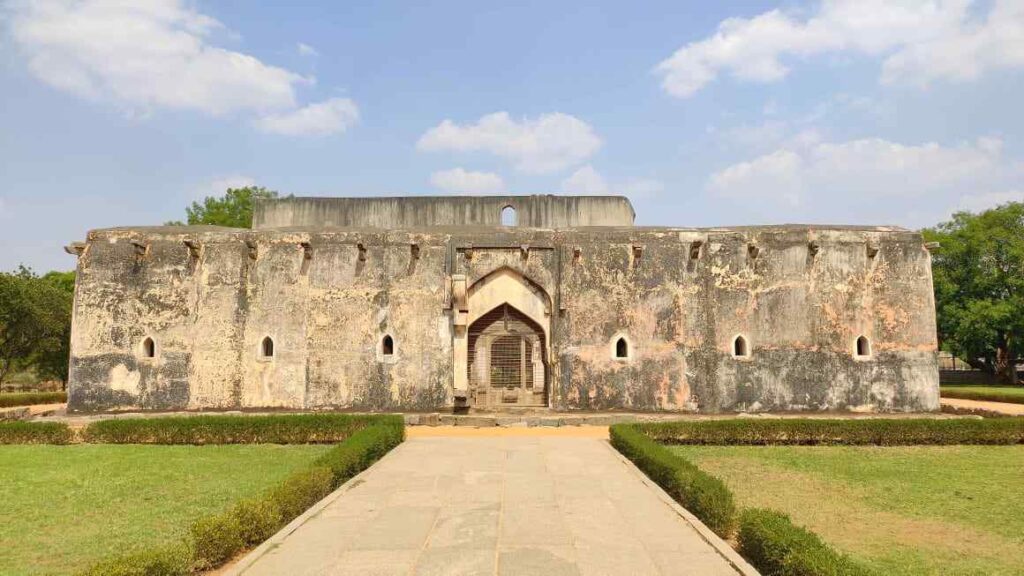
Royal Bathing Chamber:
The most common theory suggests the Queens Bath served as a luxurious bathing complex for the royal women of the Vijayanagara Empire. The elaborate architecture with a central courtyard, balconies, and ornamental details paints a picture of a cool retreat for the queens and their companions to escape the Deccan heat.
Multi-Purpose Royal Complex:
Historians propose a broader purpose beyond just bathing. The location outside the Royal Enclosure hints at it being a private bathing complex for both the king and the queens. The spacious layout and central pool further fuel speculation of it being a royal pleasure complex. Others believe it might have been a royal pleasure complex, offering a cool retreat for leisure activities enjoyed by the royal family.
Beyond Bathing:
The lack of clothes changing rooms within the structure raises questions about its primary function as a bathing chamber. Perhaps it served a more multifaceted role in royal life. Some theories suggest it might have been used for religious rituals or ceremonies associated with water.
Additionally, considering its spacious corridors and balconies, it’s plausible that the Queen’s Bath was used for social gatherings or even as a venue for cultural performances and entertainment. Its strategic location within the Royal Centre also hints at its significance in the administration and governance of the empire, possibly serving as a meeting place for royal councils or diplomatic discussions. Regardless of its exact purpose, the Queen’s Bath remains a captivating architectural marvel that invites exploration and speculation about its rich history and cultural significance.
The ongoing debate about the function of Queens Bath encourages visitors to engage with Hampi’s history on a deeper level. It prompts them to examine the architectural details, consider the social norms of the era, and ponder the lives of those who used this space. Whether it served as a luxurious bathing chamber, a multi-purpose royal complex, or something entirely different, Queen’s Bath stands as a testament to the architectural finesse and planning of the Vijayanagara era.
Imagine balconies adorned with small windows lining the sides, offering a perfect vantage point to enjoy the cool breeze and the scenic beauty surrounding the complex. Imagine the chatter and laughter echoing through these open spaces, a stark contrast to the serene atmosphere visitors experience today.

Architecture and Design
Stepping beyond the grand facade, the Queens Bath unveils its captivating details. The central feature is a rectangular pool made of bricks, surrounded by an ornate moat on all sides. A bridge-like structure allows access to the pool, suggesting a deliberate design to control who could enter the bathing area, especially if it was indeed used by the royal family.

Inside, visitors are greeted by a central pool, once filled with fragrant flower petals and perfumed water for the queen’s baths. The pool is enclosed by a covered verandah featuring intricately carved balconies and windows, providing the royal women with privacy while enjoying the views of the surrounding garden.
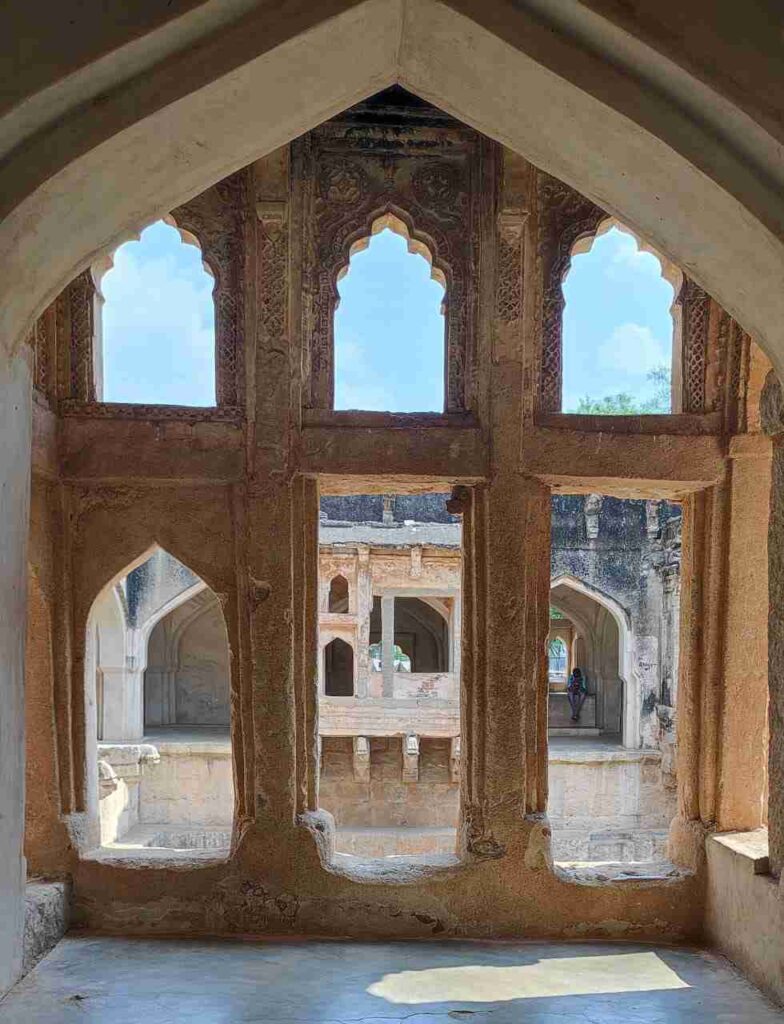
The once-ornate interior walls might have been adorned with intricate carvings and decorative elements depicting scenes from mythology or royal life. While time and weather have taken their toll, remnants of these embellishments can still be seen, offering a glimpse into the artistic mastery of the era. Look closely, and you might even spot empty sockets on the floor, believed to have once held pillars that supported a canopy over the pool. Imagine the coolness and tranquility this canopy would have provided, creating a luxurious escape from the hot Deccan sun.
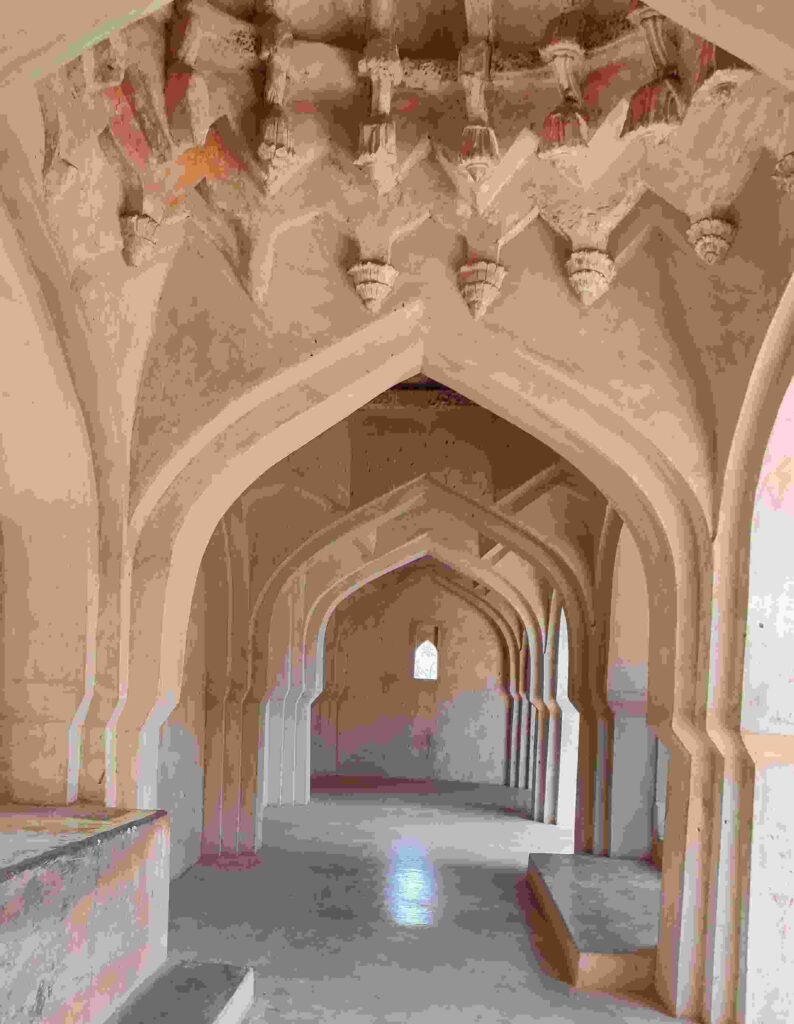
Exploring Queen’s Bath
The structure comprises a bath measuring 15 meters square and 1.8 meters deep, surrounded by corridors. A chute on the east side provides water to the bath from a water channel that runs around the structure. Visitors can access the bath via a flight of steps at the north entrance. The corridors feature 24 vaulted bays defined by arches, with a small entrance at the south and large arched openings on the other three sides.

A staircase on the southeast side of the corridor leads to the roof of the structure. Additionally, eight balconies, two on each side, project into the bath, while another balcony extends from the exterior wall at the south. Both the exterior and interior faces of these balconies are adorned with geometric, arabesque, and foliate designs. Leaping yalis can be observed at the corners where the balconies meet the side walls.
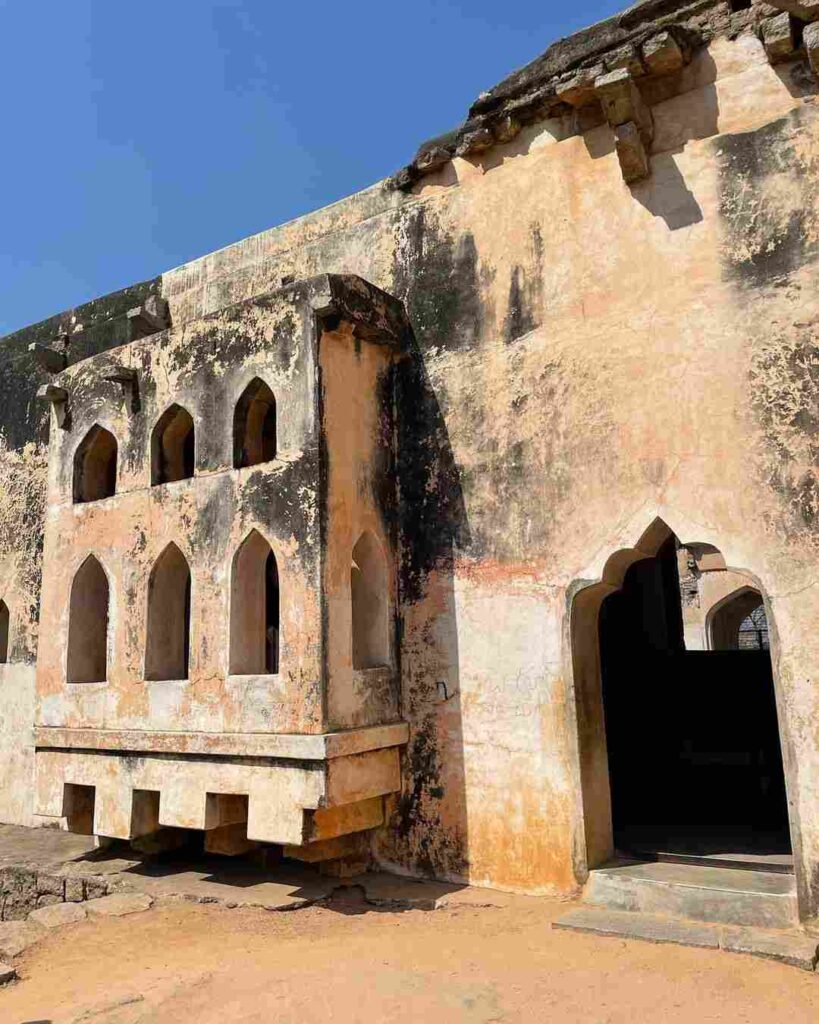
The corridor’s ceiling boasts varied plaster-decorated domes and vaults, with a lotus medallion in the center. The exterior of the structure is relatively austere, except for the stone corbels indicating the presence of an eave in the past. A fragment of the original parapet is visible on the north side.
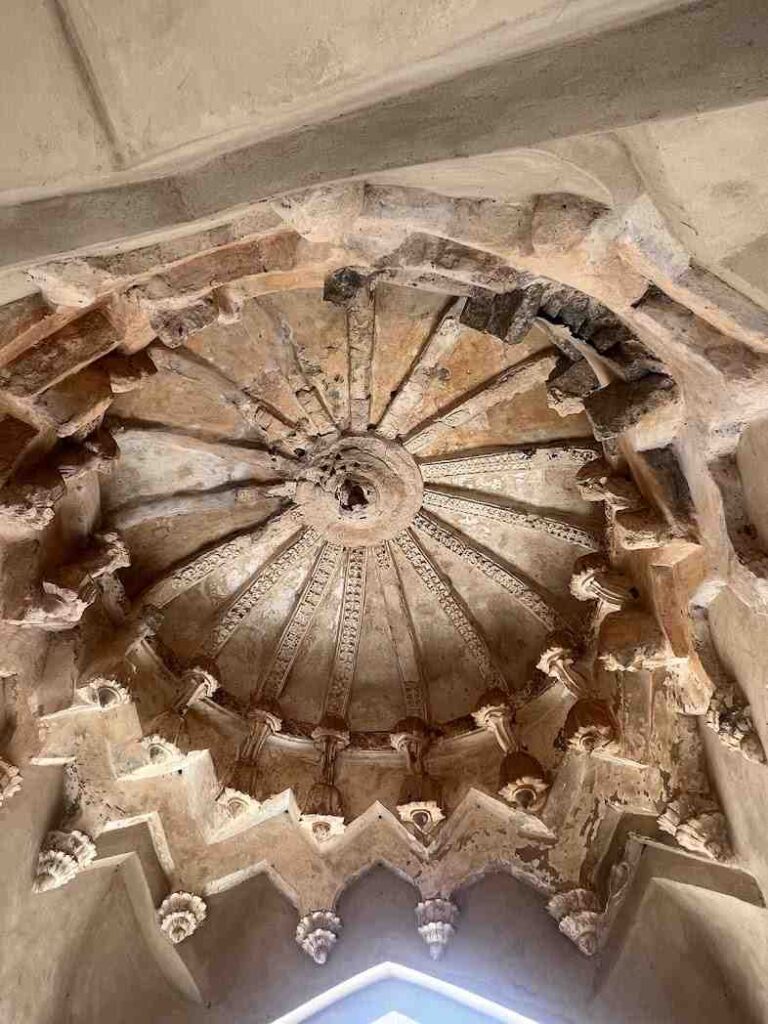
Visitors to Queen’s Bath can immerse themselves in the rich history and beauty of the site by taking a leisurely stroll around the complex. As you wander through the covered verandah, imagine the luxurious baths and lively conversations that once took place here. Admire the intricate carvings and decorations that adorn the walls and pillars, each telling a story of the empire’s glory days.
Relaxing at Queen’s Bath: Surrounded by Greenery
Queens Bath is a beautiful place with lots of greenery. It’s perfect for relaxing and enjoying nature. The lawn is well-kept and adds to the peaceful atmosphere. Surrounded by trees, it’s shady and cool, so you can escape the heat and have a calm moment. Whether you’re exploring the area or taking a break from sightseeing, Queen’s Bath is a lovely place to relax and feel refreshed in nature’s beauty.
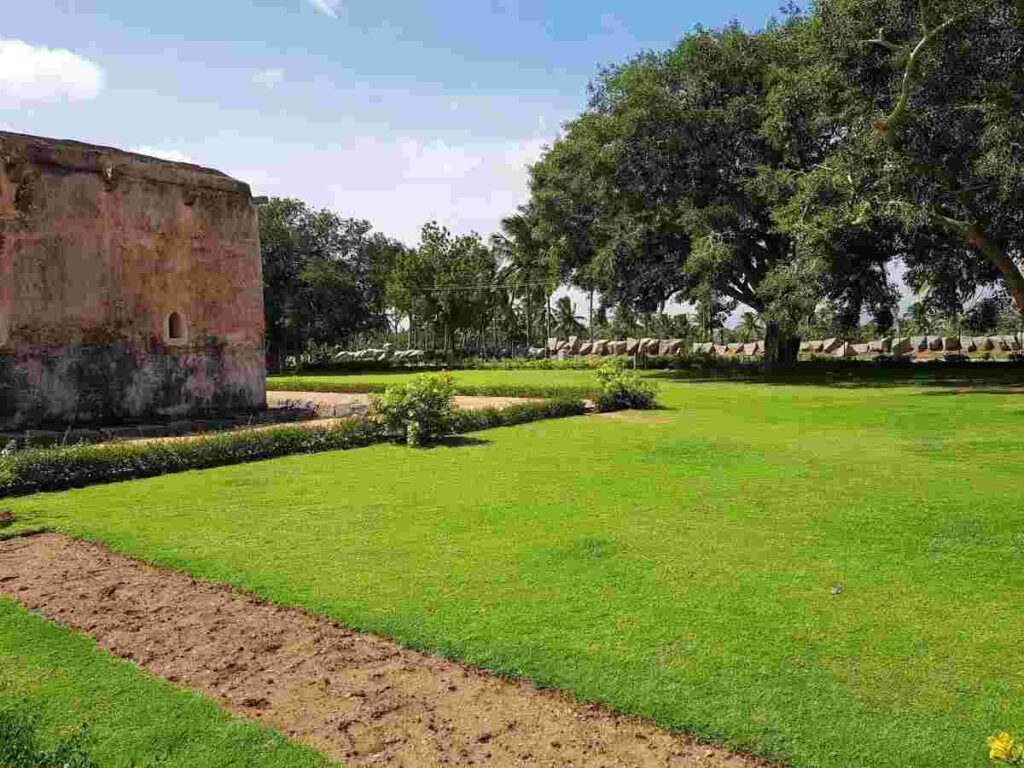
Octagonal Bath
Another bath structure near the queen’s bath is the Octagonal Bath, situated in a slightly isolated location but well connected by a mud road. It is northeast of the Chandrashekara temple, approximately 1 kilometer from the Kamalapur Bus Stand, and 4 kilometers from the Hampi Bus Stand. Additionally, it is just 800 meters northeast of Queen’s Bath.
It’s 2.5 meters deep and features an open mantapa with a verandah around it. At the center of this stone structure is an octagonal platform, giving it the name Octagonal Bath. Surrounding the bathing area are two rows of 24 pillars in the open mantapa, covered with a ceiling. A new wall has been built between the exterior pillars, giving it a delicate appearance with stucco decoration.
In the center of the bath is a plastered deep-water channel where water collects. Each corner of the bath has small, rounded perforations from which water is supplied to the bath. Recent excavations suggest that the entire structure, including the ashtabhuja bathing pool, may have served as a Pratimagruha. The open mantapa inside may have been used for performing apara karma, while the middle wall could have been a place for offering pinda.[2]
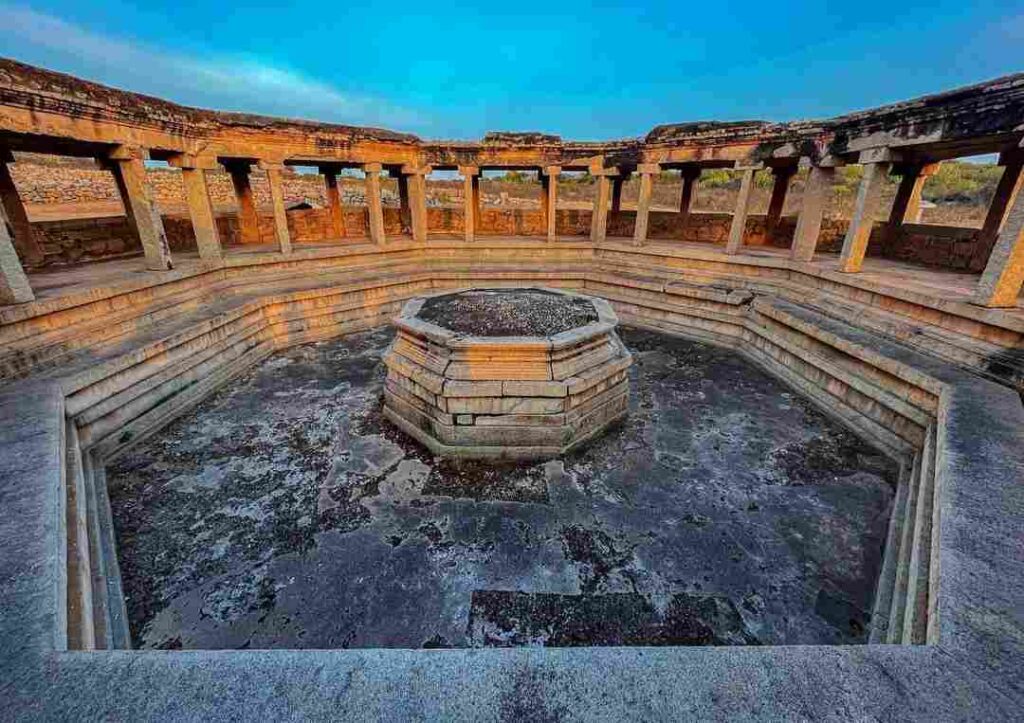
Tips for Visiting the Queen’s Bath
Before exploring the majestic Queens Bath in Hampi, it’s essential to keep a few things in mind to ensure an enjoyable and safe experience. Here are some helpful tips to make your visit memorable.
Plan Your Visit:
The Queens Bath is a popular tourist destination, so it can get crowded, especially during peak season. If you want to avoid the crowds, try to visit early in the morning or later in the afternoon.
Guided Tour:
Consider joining a guided tour to learn about the history and significance of the Queen’s Bath from knowledgeable guides.
Footwear:
Wear comfortable footwear as you’ll be walking on uneven terrain.
Sun Protection:
Bring sunscreen, a hat, and sunglasses to protect yourself from the sun, as there may not be much shade around.
Respect the Site:
Remember that the Queens Bath is a historical monument, so avoid touching or climbing on the walls, and be respectful of the site’s significance.
Photography:
Capture the beauty of the bath and its surroundings, but be mindful of other visitors and avoid obstructing pathways.
Explore Nearby Attractions:
There are a number of other interesting ruins located in the Royal Enclosure, so be sure to take some time to explore the area. Some of the other notable places include the Elephant Stables, the Lotus Mahal, and the Hazara Rama Temple.
Stay Hydrated:
Carry water with you, especially if you’re visiting during hot weather.
Safety Awareness:
While Hampi is generally safe, it’s wise to stay vigilant and take precautions against petty theft.
Architectural Appreciation:
The Queens Bath showcases stunning Indo-Islamic architecture. Spend some time admiring the intricate carvings and the overall design of the structure.
Mind the Moat:
The Queens Bath is surrounded by a moat. Be cautious and avoid getting too close to the edge for your safety.
Opening hours:
The Queens Bath is open daily from sunrise to sunset. There is no entrance fee to visit the Queen’s Bath.
Best time to visit:
The best time to visit Hampi, and by extension, the Queens Bath is from October to March. During this time, the weather is pleasant and sunny, making it ideal for exploring the ruins. Avoid the summer months (April to June) as it gets scorching hot, and the monsoon season (July to September) can be wet and slippery.
Enjoy the Experience:
Take your time to soak in the history and beauty of the Queens Bath and enjoy your visit to this fascinating historical site.
Gallery:-
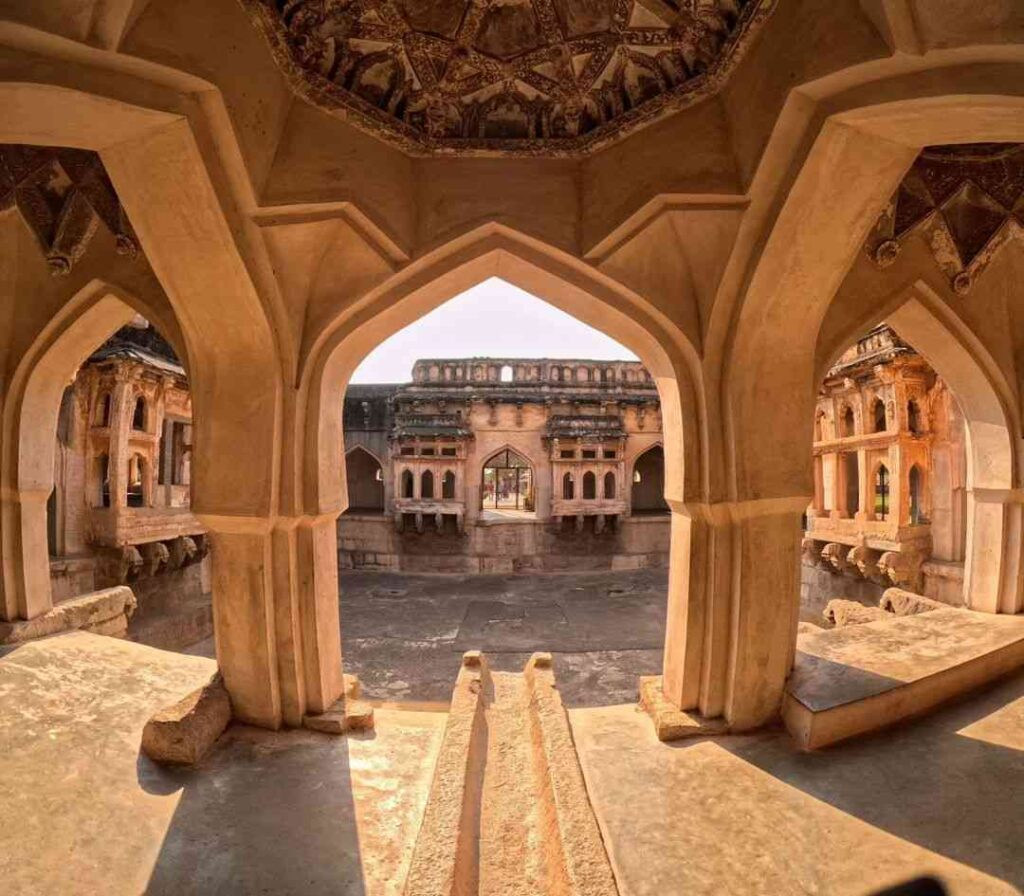
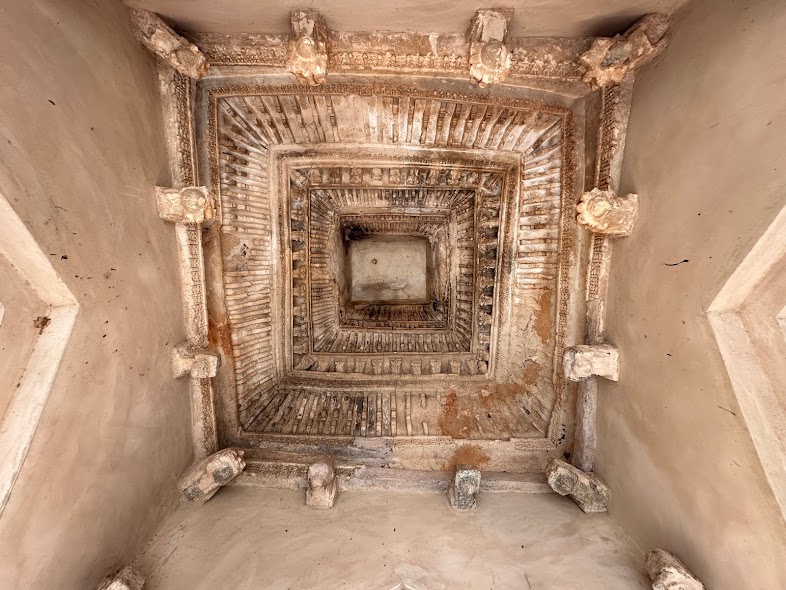
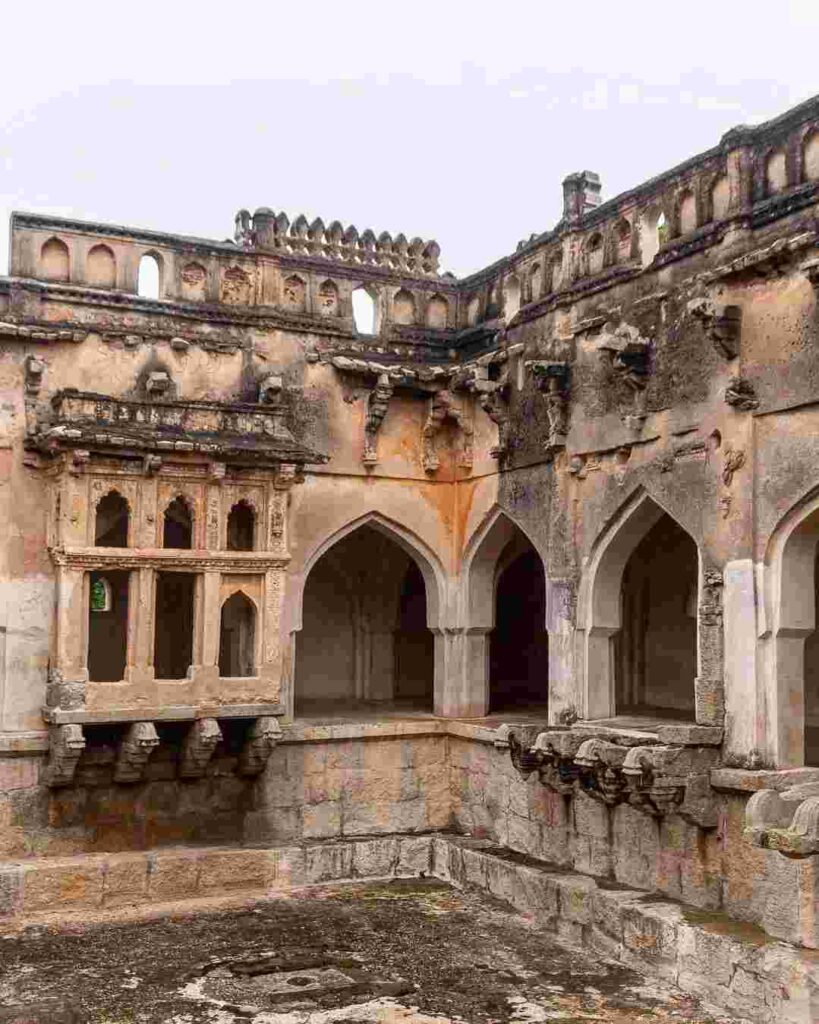
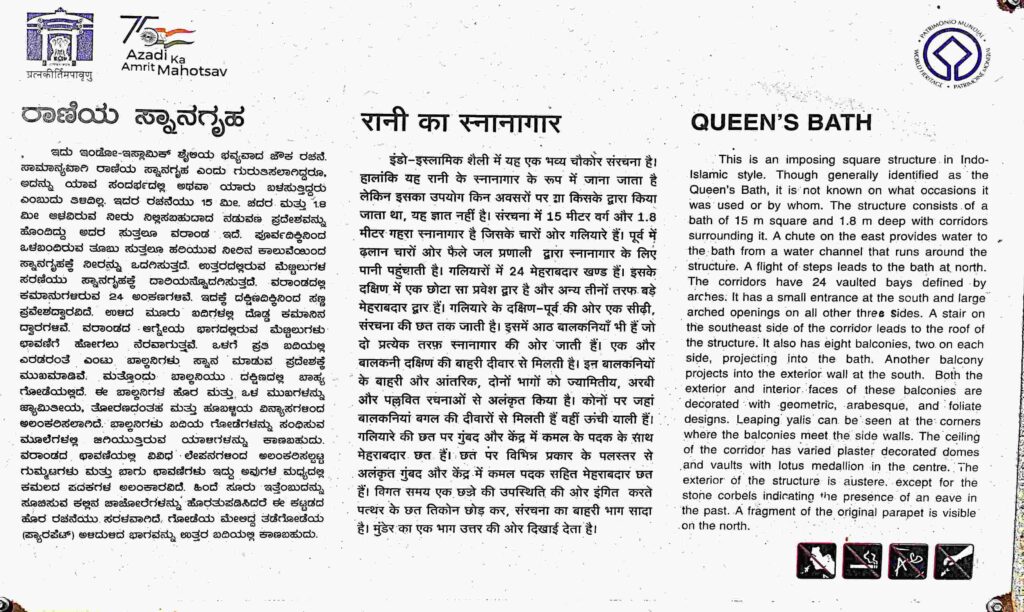
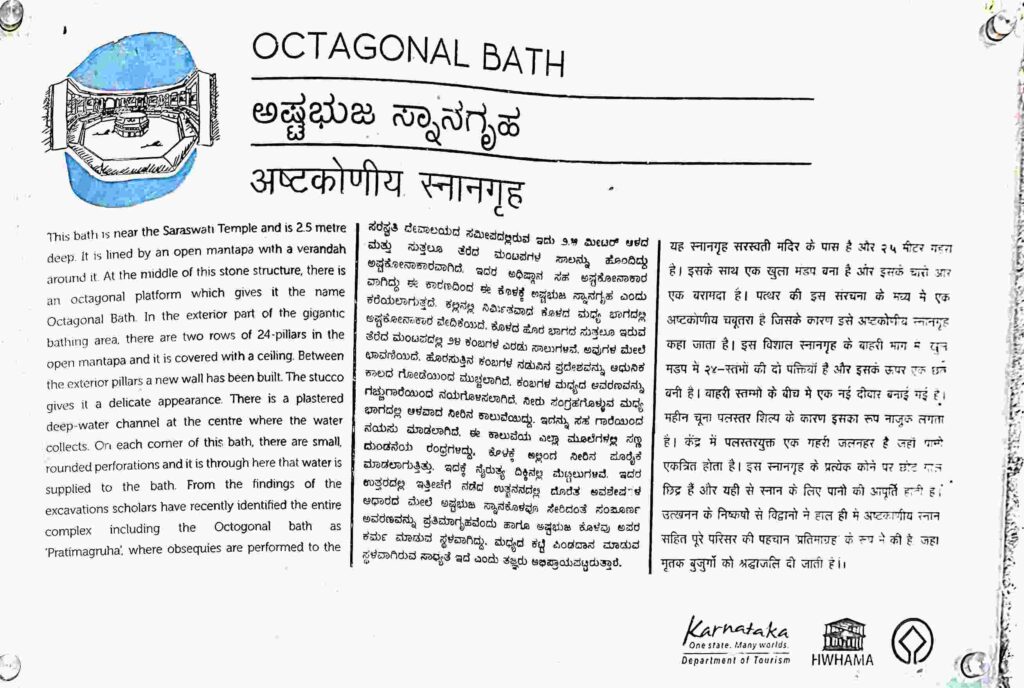
References:-
References from the Following Sources;